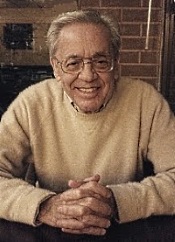 As usual with Tchaikovsky, he felt dissatisfied with his Fifth Symphony when he finished it. He considered it a failure; but, well, he wasn't too keen on The Nutcracker or the 1812, either. What did he know.
As usual with Tchaikovsky, he felt dissatisfied with his Fifth Symphony when he finished it. He considered it a failure; but, well, he wasn't too keen on The Nutcracker or the 1812, either. What did he know.Russian composer Peter Tchaikovsky (1840-1893) wrote his Symphony No. 5 in E minor, Op. 64, in 1888, and he conducted its première the same year. He used a theme that reappears in various guises in all four movements of the work, describing it at first as "a complete resignation before fate, which is the same as the inscrutable predestination of fate." But it's not all that dark and things pick up. Before long, we hear the character of the main theme become more positive as it progresses through the symphony, as though Tchaikovsky were voicing his increased optimism with regard to fate, the symphony becoming ever more affirmative and upbeat as it goes along.
On the present recording, Maestro Frank Shipway conducts the Royal Philharmonic Orchestra. Candidly, when I first received the disc I was only vaguely familiar with the name Shipway, and even then I was probably thinking of Thomas Schippers. Nevertheless, Shipway is a prominent British conductor of international repute, mainly through his work with the Italian National Symphony Orchestra of the RAI. He studied conducting with Sir John Barbirolli and to a lesser degree with Herbert von Karajan and Lorin Maazel. In addition, he has judged conducting competitions and given master classes in music. Apparently, too, his recording of the Mahler Fifth with the RPO has garnered much critical acclaim. Fair enough. He certainly acquits himself well on this Tchaikovsky recording.
Shipway starts Tchaikovsky's Fifth very slowly, in hushed terms, building in intensity from humble beginnings. It's an indiction of how the conductor will proceed throughout the symphony: very carefully, very methodically, his rhythms and tempos a tad regimented yet carrying a decent Romantic spark, too, and eventually lighting up the room with their strength and authority. A few minutes in and the movement is as animated as Tchaikovsky directs: "Allegro con anima." Then the recurring main theme opens up beautifully.
The symphony continues in this manner, with the conductor shaping the music thoughtfully, and the orchestra responding with passion and precision. The Andante cantabile, for instance, sounds exceptionally relaxed yet still provides ample emotion.
The third movement waltz moves dancingly along, if without quite the life and lilt we hear from Jansons (Chandos), Muti (EMI), or Haitink (Philips). Still, it has plenty of vitality and offers a charming interlude before the music's fiery conclusion.
Tchaikovsky pulled out all the stops in his finale, the main theme now sounding quite triumphant and Shipway making the most of it by executing some really forceful crescendos of tremendous power. Initially, Tchaikovsky's audiences didn't know what to make of this movement, many of them finding it too reckless and explosive. Today, we accept it as simply exciting and exhilarating. Shipway helps us out.
As a coupling, the disc gives us Tchaikovsky's little tone poem Der Voyevoda, which he wrote in 1890 and based on a poem by Adam Mickiewicz. As usual, Tchaikovsky didn't like it, dismissing it as "rubbish." Nonetheless, it makes a suitable companion to the Fifth Symphony because like the Fifth it is not rubbish but quite varied, impassioned, and ultimately fascinating, if a little bombastic. Again, Shipway gives it careful attention.
Royal Philharmonic Masterworks, Sheridan Square Entertainment, and Allegro Corporation, the makers and distributors of the disc, provide no information on the recording, no date or location. The producers do tell us, however, that it is a part of their "Audiophile Collection," a "20 bit digital recording, edited and mastered via 32 bit digital sound processing, recorded in high definition and playable on all CD players." Since to my knowledge there is no absolute, objective meaning of the phrase "high definition" in regard to music recording, I suppose they mean it sounds pretty good. And it does.
The recording displays good orchestral depth, fairly good sonic delineation and detailing, and a very wide dynamic range and impact. The sound stage is big, big, big, with a good separation of instruments without appearing either excessively close or too multi-miked. The strings are smooth and the bass is solid, with a touch of soft, overall warmth and a bit of upper bass resonance thrown in. While it may not be what everyone thinks of "audiophile" sound, it's surely a pleasing aural experience.
JJP
























